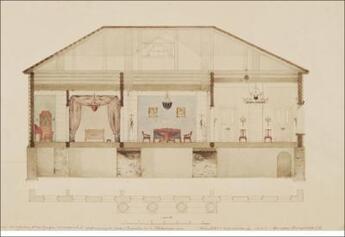Résumé:
- A new English-language contribution to Moscow's architectural history, newly researched and detailing the history of one house from its construction to its recent restoration - New discoveries about the house and its owner, and in particular the Moscow phenomenon of wooden buildings made in... Voir plus
- A new English-language contribution to Moscow's architectural history, newly researched and detailing the history of one house from its construction to its recent restoration - New discoveries about the house and its owner, and in particular the Moscow phenomenon of wooden buildings made in imitation of stone - An architectural history of Moscow told through the story of one building - an accessible approach to Russian history and architectural history Sytin House was built in Moscow in 1803 by Brigadier Andrei Sytin to be his city residence. Built from wood but disguised to look like stone, a peculiarity of the Russian building tradition, it was a typical house for a member of the gentry class, built according to standardized designs and decorated with classical motifs. The otherwise modest house has a portico with four columns and a pediment, all from wood. The Sytin family moved in just a few years before the fire of Moscow in 1812 that devastated most of the city, but, amazingly, not this house, that is to this day an extraordinary survivor, one of only a handful of such houses left in Moscow. The house survived the early 20th century building boom, as well as the upheaval of the 1917 revolution when numerous wooden houses were dismantled for firewood. Divided into communal apartments during the Soviet period, it avoided demolition under Stalin, was listed in the 1960s, and finally restored in 1980. It was once again left empty in the 2010s however, and began to decline. Nestled between two of Moscow's main streets, it has been recently triumphantly restored, and is today a witness of over 200 years of the city's architectural history. Text in English and Russian.
Donner votre avis














